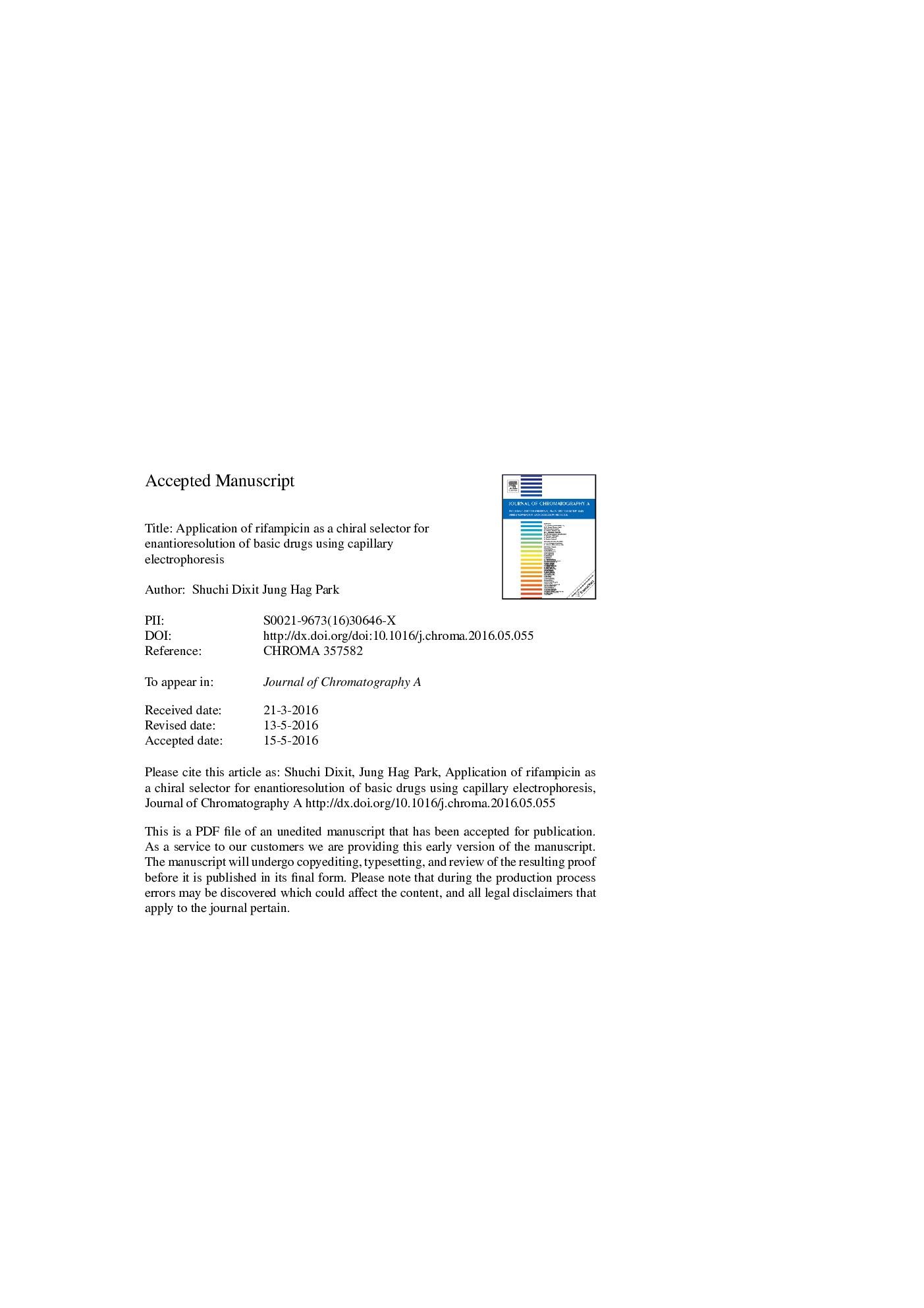| Article ID | Journal | Published Year | Pages | File Type |
|---|---|---|---|---|
| 7610011 | Journal of Chromatography A | 2016 | 19 Pages |
Abstract
Rifampicin, a member of rifamycin sub-class of antibiotics which belongs to the naphthalenic ansamycin class of antibiotics, has a characteristic ansa structure, i.e., a ring structure or chromophore spanned by an aliphatic chain. The present work was designed to evaluate its potential as a chiral selector (CS) as its structure consisting of nine stereogenic centers, an aromatic moiety and several functional groups (i.e., one imine, one amide, one acetoxy residue, two aliphatic hydroxyl and three phenolic hydroxyl groups) was expected to instigate multiple enantioselective interactions, namely, hydrogen bonding and inclusion complexation with chiral analytes, and therefore resulting in efficient enantioseparations. Systematic experiments were performed to investigate the effects of concentration of CS, composition of background electrolyte (BGE) and applied voltage on chiral separation. Enantiomers of propranolol and metoprolol were baseline resolved using a BGE consisting of 20Â mM CS and 50/50 (v/v) iso-propanol/phosphate buffer (100Â mM, pH 7.0) whereas for enantiomers of sertraline, a BGE consisting of 23Â mM CS and 40/60 (v/v) iso-propanol/phosphate buffer (100Â mM, pH 7.0) resulted in baseline resolutions.
Related Topics
Physical Sciences and Engineering
Chemistry
Analytical Chemistry
Authors
Shuchi Dixit, Jung Hag Park,
